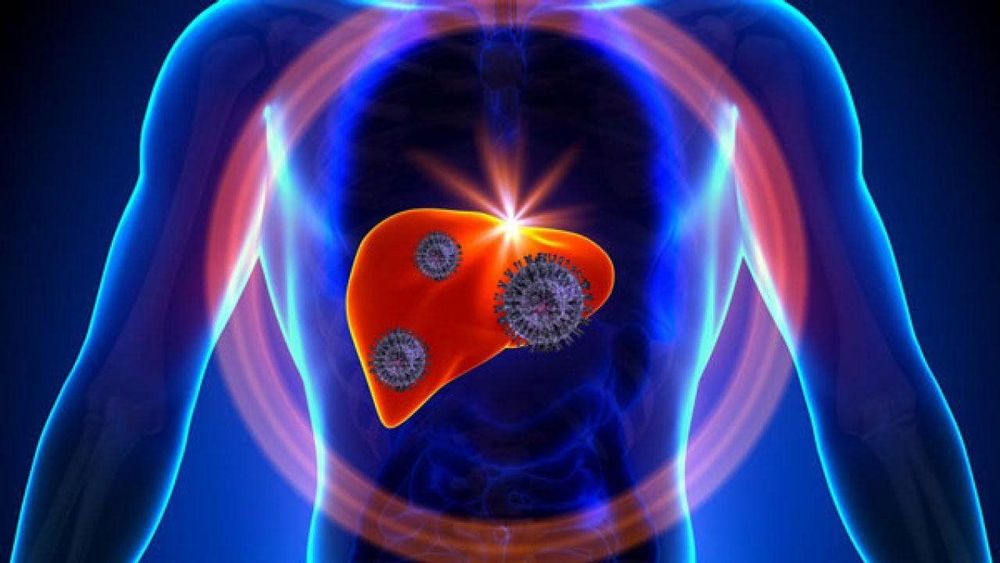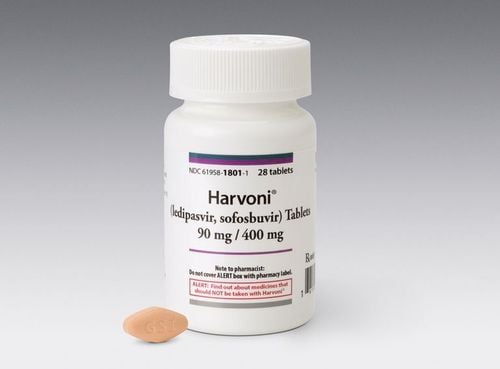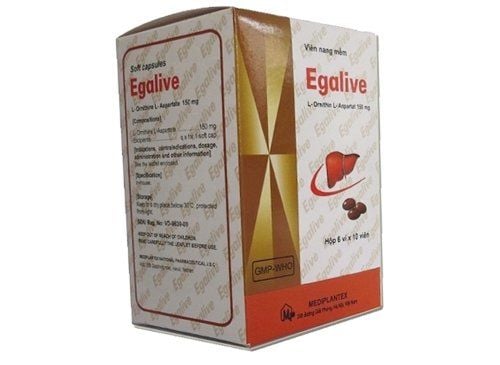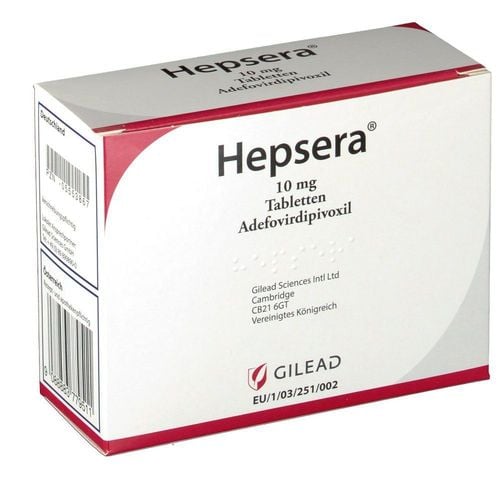This is an automatically translated article.
Hepatitis B (HBV) infection accounts for about 5-20% of the 36 million people living with HIV in the world. Meanwhile, hepatitis C (HCV) co-infection with HIV accounts for 5-15%, but the rate of hepatitis C co-infection is up to 90% for injecting drug users. Co-infection with viral hepatitis increases mortality and morbidity in HIV patients, including those on antiretroviral therapy.
1. Hepatitis B and C virus co-infection can occur in HIV patients
Viral hepatitis is caused by a variety of viruses that have an affinity for hepatocytes and are capable of causing inflammatory and necrotic syndromes. Based on clinical manifestations and laboratory test results, viral hepatitis is divided into 2 types:
Acute viral hepatitis: clinical symptoms and abnormalities in liver function tests lasting no more than 6 months; Chronic viral hepatitis: clinical symptoms and liver function test abnormalities persist for more than 6 months. Co-infection with hepatitis B and C is common, especially in endemic areas. If infected with two viruses, hepatitis B and hepatitis C at the same time, the disease will progress very quickly, increasing the risk of cirrhosis and hepatocellular carcinoma.
Hepatitis B virus (HBV) and hepatitis C virus (HCV) are the most common causes of chronic liver disease worldwide, the two diseases share a common route of transmission, so hepatitis B co-infection and C are common in patients living in HBV-endemic areas, especially in those at high risk of injecting the virus (injection drug users), people with multiple sex partners, patients on hemodialysis. , transplant patients and people who are positive for human immunodeficiency virus (HIV patients).
Currently, the number of patients co-infected with HBV/HCV is not known precisely. The prevalence of HBV/HCV co-infection varies from 9 to 30% depending on the geographical region. This number may understate the exact number of HBV/HCV co-infected individuals due to the hidden nature of HBV infection (patients with hepatitis B surface antigen [HBsAg] negative but serum HBV DNA levels). detectable) in patients with chronic hepatitis C.
2. How is HBV/HCV co-infection treated?
Patients coinfected with hepatitis B virus/HCV receive the same treatment as patients with hepatitis C . If HBV DNA is 2000 IU/ml for HBeAg-negative hepatitis B patients or ≥ 20,000 IU/ml for HBeAg-positive hepatitis B patients, add antiviral drugs to treat hepatitis B. .
Note that the interaction between Ledipasvir and Tenofovir may increase nephrotoxicity, so patients should be monitored for renal function regularly if these 2 antiviral drugs are used concurrently.

Đồng nhiễm viêm gan B và C là một tình trạng thường gặp
3. Hepatitis B and C co-infection in HIV/AIDS patients
3.1. Diagnosis of chronic hepatitis B/HIV patient
Diagnostic methods for chronic hepatitis B in HIV patients include:
Chronic hepatitis B: HBsAg test results (+) > 6 months Advanced chronic hepatitis B: HBsAg test results (+) > 6 months, AST and ALT elevations more than 2 times normal values, intermittent or continuous elevations > 6 months, or evidence of progressive histopathologic damage to liver, cirrhosis (liver biopsy) /liver elastography/fibrotest/APRI index) not due to other causes.
3.2. Diagnosis of chronic hepatitis C in HIV patients
Methods to diagnose chronic hepatitis C in HIV patients include:
Chronic hepatitis C: Anti-HCV test results (+) > 6 months; Advanced chronic hepatitis C: Anti-HCV (+), HCV RNA (+) results and with/without cirrhosis (review based on APRI index/liver biopsy showing chronic hepatitis and fibrosis with meaning/FibroScan); Hepatitis C is a viral infection that attacks the liver, like hepatitis B, it can cause acute or chronic illness. Most patients with hepatitis C have mild symptoms or no symptoms when infected, but gradually progress to chronic disease, the remaining 85% remain the virus in the blood for life.
Without treatment, hepatitis C will progress to complications and increase the risk of death, in people infected with hepatitis C alone takes about 30-40 years, in HIV patients with hepatitis C co-infection takes about 10 -20 years.
4. How is hepatitis C virus co-infected with HIV treated?
The treatment of HIV co-infection in patients with hepatitis C virus is carried out as follows:
It is necessary to prescribe treatment for all cases of chronic hepatitis C with HIV co-infection, giving priority to treatment of chronic hepatitis C to reduce morbidity and mortality from cirrhosis and liver cancer. Treatment is similar to hepatitis C patients without HIV, with priority given to regimens with DAAs; HIV patients should be treated with antiretroviral drugs first until CD4 count > 200 cells/mm3 or HIV RNA load below the threshold of inhibition (<1000 copies/ml) can be initiated. patients treated for chronic hepatitis C; Do not use ritonavir-containing regimens for HIV-nave patients; When treating HIV concurrently with hepatitis C, it is important to be aware of possible drug interactions between DAAs and ARVs.

Tiêm phòng vắc xin ngừa viêm gan B là phương pháp phòng ngừa đồng nhiễm viêm gan virus ở bệnh nhân HIV
5. HIV patients need to prevent viral hepatitis coinfection
Methods of preventing viral hepatitis coinfection in HIV patients are implemented as follows:
Counseling on infection prevention, complications and possibility of new infection, lifestyle, regimen for HIV patients, apply preventive measures to avoid transmission of HBV and HCV to the community and to prevent re-infection, especially HCV re-infection after being cured; Counseling to quit drinking; Patients do not arbitrarily take drugs, including herbal medicines; Build a complete and balanced diet, avoid overweight, exercise daily, get proper rest, quit or reduce smoking; Vaccinate against hepatitis B ; Screening test for HBsAg, Anti-HCV for all HIV patients, can be tested every 1 year if the HBsAg, Anti-HCV test is negative before and HIV patients are at risk of HBV, HCV infection; When treating hepatitis B, hepatitis C / HIV patients need counseling, regular monitoring of liver function, assessment of complications of cirrhosis, liver cancer; Treatment of hepatitis C needs to choose a regimen depending on financial capacity, side effects, drug interactions and risk of drug resistance; Men who have sex with men have a higher risk of co-infection with hepatitis B and C viruses, syphilis, sexually transmitted diseases, etc., compared with other subjects in the community. Sexually transmitted diseases can increase the risk of HIV infection and make the disease worse, whereas HIV infection makes the course of STIs worse, in which hepatitis B and C are more common. lead to fibrosis and cirrhosis rapidly. In conclusion, co-infection with hepatitis B and C increases mortality and worsens for HIV patients, including those on antiretroviral therapy. Therefore, it is necessary to actively prevent viral hepatitis coinfection in HIV patients effectively.
Please dial HOTLINE for more information or register for an appointment HERE. Download MyVinmec app to make appointments faster and to manage your bookings easily.













